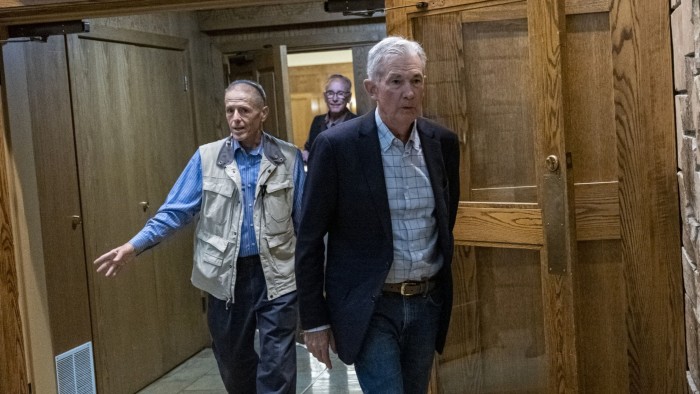The choices of strategy for Jay Powell


Roula Khalaf, Editor of the FT, selects her favourite stories in this weekly newsletter.
The writer is president of Queens’ College, Cambridge, and an adviser to Allianz and Gramercy
While many interesting papers are discussed every year at the central bank conference in Jackson Hole, it is the Friday morning address by the Federal Reserve chair that has captured the lion’s share of media attention over the years. Recognising the level of interest, Fed chair Jay Powell and his predecessors have adopted one of three main approaches depending on the circumstances: signalling imminent monetary policy steps, delving into long-term monetary policy issues or limiting themselves to a narrow economic question with no immediate policy implications.
Powell has a particularly target-rich environment for whatever strategy he chooses this year. It is a moment of great economic fluidity with fascinating policy challenges and trade-offs, both tactical and strategic. Indeed, I would not be surprised if it is not the availability of topics that will determine what he opts to say on August 25 but a personal calculus driven largely by risk assessments.
A year ago, Powell chose the first strategy, delivering a shockingly short (under nine-minute) speech centred on the notion that “While higher interest rates, slower growth and softer labour market conditions will bring down inflation, they will also bring some pain to households and businesses.” He went on to say: “These are the unfortunate costs of reducing inflation. But a failure to restore price stability would mean far greater pain.”
This framing did more than jolt markets and trigger a large sell-off in stocks and bonds. It propagated a “pain narrative” that many media outlets employed as a benchmark. But with robust US economic growth and unemployment hovering merely a hair away from its historic low, what actually transpired was akin to a “waiting for Godot” scenario — a pain expectation repeatedly alluded to but not realised at the aggregate level.
This first approach is tempting given the many questions swirling on the near-term monetary policy outlook. They include whether the Fed is ready to declare an end to the most concentrated rate-increasing cycle in decades; the timing of subsequent rate cuts; and, should inflation misbehave, the patience the central bank is willing to show to minimise the risk of an economic recession in the “last mile” of combating unanticipated high inflation.
Yet, tempting as it is, Powell may consider another approach after his initial, costly mischaracterisation of inflation as “transitory”, the belated policy response and what has transpired since his last Jackson Hole speech. It may appear better for him to sidestep the short term and take a longer-term perspective of monetary policy.
The Fed is operating with a “new monetary framework” introduced three years ago that is better suited for the previous decade than this one. A debate is brewing over the appropriateness of the 2 per cent inflation target in the light of the recent experience in the US and elsewhere with the lower zero bound. The necessity to accommodate substantial secular supply shifts is also a big concern.
There are also questions about whether, in the context of heightened use of industrial policy, there is a need to revisit the conventional wisdom over a fiscal-monetary compact. Last, there is a case for the Fed to follow the welcomed decision by the Bank of England to institute an external evaluation of its forecasting errors — an important step to counteract the erosion of both central bank credibility and the efficacy of its forward policy guidance, as well as mitigate the potential harm to political independence.
The third strategy entails shelving both immediate and long-term policy issues, focusing instead on a specific economic query with few immediate implications. While it is not an obvious approach for a Fed chair who is not an economist by training, it may be the most cautious course for someone who has had communications challenges.
It also aligns with the extensive array of issues captivating researchers within and beyond the economic profession. After all, both the domestic and global economies remain remarkably fluid and subject to profound transformations; the green transition, the reconfiguration of cross-border supply chains, overwhelmed institutional frameworks, structurally tight labour markets and so on all play a part.
Such an abundance of topics ripe for discussion under all three approaches bodes well for Powell as he prepares his eagerly anticipated address. What is less clear, however, is what he will opt for. If I were advising him, I would suggest the third strategy at this economic, political and institutional juncture.
Comments